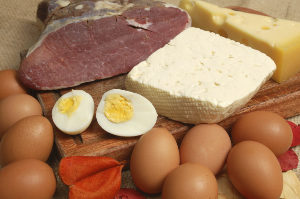Diet keto. What is a ketogenic diet? What are the results of the keto diet and what are the reviews. how it works, what are the difficulties, which menu is on the keto diet and whether it is harmful.

- Keto Diet
- The keto diet is a low-carb and high-fat diet designed to channel ketones into the body.
Why is a ketogenic diet effective, what are its contraindications and reviews, what are the principles of action? What should be included in the keto diet menu and what about the reviews of those who have lost weight? We will discuss it today.
How does the keto diet work?
When fats, proteins and carbohydrates are found in our food, our body gets energy from glucose. We get glucose only from carbohydrates. Now that grocery stores are in direct access, this is the most common type of food. But what happens at times when there are not enough carbohydrate products such as cereals or bread due to poor harvest, habitat or seasonal halo?
Carcasses have to take energy from fatty acids and proteins. You may remember my video about running to lose weight - this is him - in it I saw the process of gaining energy by oxidizing fatty acids. Now I will remind you briefly - all of our organs, which have mitochondria in tissue cells, work well on fatty acids. These are the myocardial heart muscle, and the skeletal muscle (which we pump in the gym) and the smooth muscle.
However, our brain, which is 60% fat, does not lose weight, and even a long hunger strike does not do much mental damage. Why? Reason - BBB Blood-brain barrier is a barrier that ensures the internal environment of the brain. He is the one who does not let fatty acids in - does not come out (which is why the brain does not lose weight), but also inward. And the brain cannot take fatty acids as a source of energy.
However, the brain cannot survive without fuel, and nature has predicted that as a result of nutrition, which can not provide enough glucose, the brain switches to an alternative fuel source - called the ketone body.
- Body ketones
Three substances are called ketone bodies
- acetoacetic acid (acetoacetate)
- beta-aminobutyric acid (hydroxybutyrate)
- acetone
These substances are formed in the liver from fatty acids in a process called ketogenesis. Not much acetone is formed, our main fuel is betaaminobutyric acid. Most of the central nervous system functions during this period of lack of carbohydrates in the diet.

Is the keto diet bad or not?
Ketogenesis is a normal metabolic process and should not be feared. All fears come from the fact that the state of ketosis - when the body works on the ketone body is often confused with pathology and requires immediate intervention asidokedosis. But these things are different and now we will discuss a little bit what the point is.
Ketoasidosis
What is ketoacidosis. This is very similar to ketosis, but when it is caused not by glucose deficiency due to carbohydrate deficiency, but by insulin deficiency. I remind you that our most important hormone, insulin, is a transport agent. This is our load that knows how to carry glucose through cell membranes.
When there is a lot of glucose, but there is no insulin or does not fulfill its function, cells begin to experience energy starvation in the same way as in a carbohydrate-free diet. As a result, the body produces a group of hormones that can break down fat (lipolytic, in this case it is called counter-insular) and the liver begins to produce ketone bodies from fatty acids. What is happening?
There is a lot of undigested glucose, there is also a lot of ketone bodies, and the kidneys try to get rid of excess ketones and glucose, which causes dehydration - called osmotic diuresis. As a result of diuresis, the electrolyte is washed away - and you remember that this is true and very bad from this video, even two - the electrolyte balance shifts to acidification and as a result, this ketoacidosis develops. all of this requires immediate treatment in the hospital, as patients can easily move the horse.
It is clear that this condition is only possible in two cases
- Type 1 diabetes when the pancreas does not produce insulin
- Dehydration - diarrhea, vomiting, taking diuretics.
That is, if you are healthy, you do not have type 1 diabetes, you do not have to be afraid of ketoacidosis. In your case, the nervous system will function perfectly on the ketone body.
So How To Use The Keto Diet
Firstand most importantly insert ketosis. And this is one of the most difficult tasks. Because in most cases - remember I told you that takeo homeostasis - people for decades eat foods that contain carbohydrates for the first time - it will put pressure on the body. Carcasses are not accustomed to this and in a day or two you will not enter ketosis. It takes time. First, the body will consume the remaining glucose and glycogen. Then he will try to get glucose using gluconeogenesis from amino acids, glycerin, lactic acid. And only when it is completely out of the moth, will it begin the process of ketogenesis and, with a squeak, will begin to drag the central nervous system power supply system to the new rail. Remember - carcasses actually do not like homeostasis violations and resist as best they can.
This is the hardest time ever - you are stupid, angry, you have no strength, your brain refuses to work, your head rotates - and many other pleasures. And this situation lasts - for everyone in different ways - but maybe up to two or three weeks.
Second. To enter ketosis, you need to cut down on carbs or keep them to a minimum - and this is another difficulty. There are organs that cannot use fatty acids or ketone bodies for energy. They need glucose and only glucose- these are the intestinal epithelium, the vascular endothelium, the eye lens, the adrenal cortex, something else - I do not remember. Therefore, you cannot leave it without glucose. Carcasses will get glucose for them with gluconeogenesis either from your muscles or from a minimum of carbohydrates, coming with food. But that’s just the point - remember about homeostasis - the desire to maintain balance at any cost - entering ketosis is difficult, but easy to get out of. And hello keep the fat on the back.
Third- to enter ketosis, you need to eat a lot of fat and not have to overdo it with protein !!!! And this is also very difficult to control. Because with the excess of protein in the diet - with the help of the same gluconeogenesis, the carcass from it immediately turns on glucose - and you will once again fall from a state of ketosis that is hard to beat. If there is less protein, the muscle will gradually disappear. And getting this balance is very difficult for a beginner. Everything is the same as fat - 80% of the diet should be fat.
Fourth- difficulty in assessing whether we have entered ketosis or not.
- Testing the presence of acetone in urine with absurd strips. We may be in ketosis, but there will be no acetone in our urine.
- Blood glucose analysis with special strips for ketone bodies is possible, but these strips are not cheap.
- Finally, there is a special instrument for the determination of acetone in the breath. They were created for epilepsy because the ketogenic diet is good for dealing with epileptic seizures - but it also costs around $ 100.
And finally, if you decide to try a keto diet, how do you structure your diet?
- protein - 1. 5-2 grams per weight. This is conditional.
- The rest is fat.

What foods are suitable for a keto diet?
- eggs with egg yolk
- all cheese
- fat cottage cheese
- sour cream
- lard
- pork
- nuts
- salmon
- trout
- salmon
- lamb
















